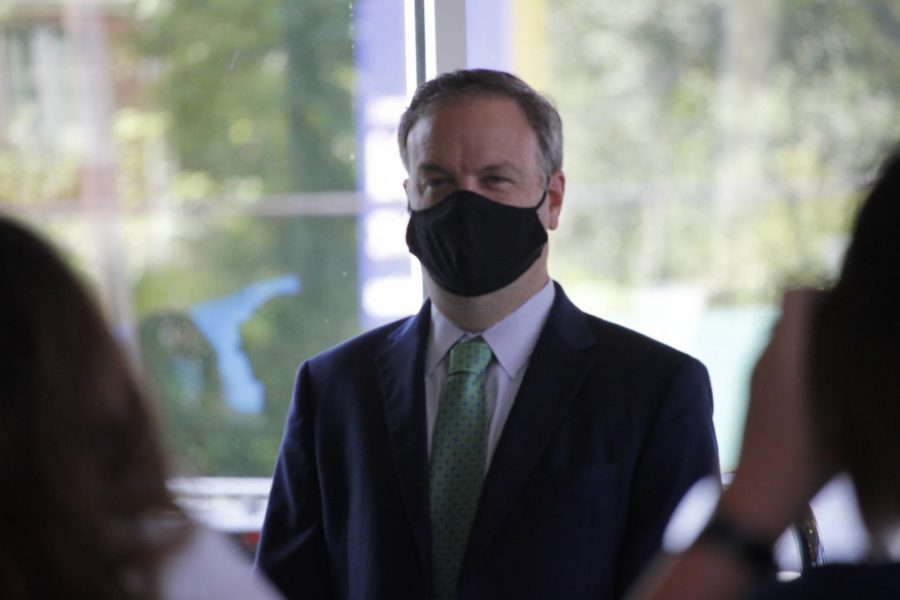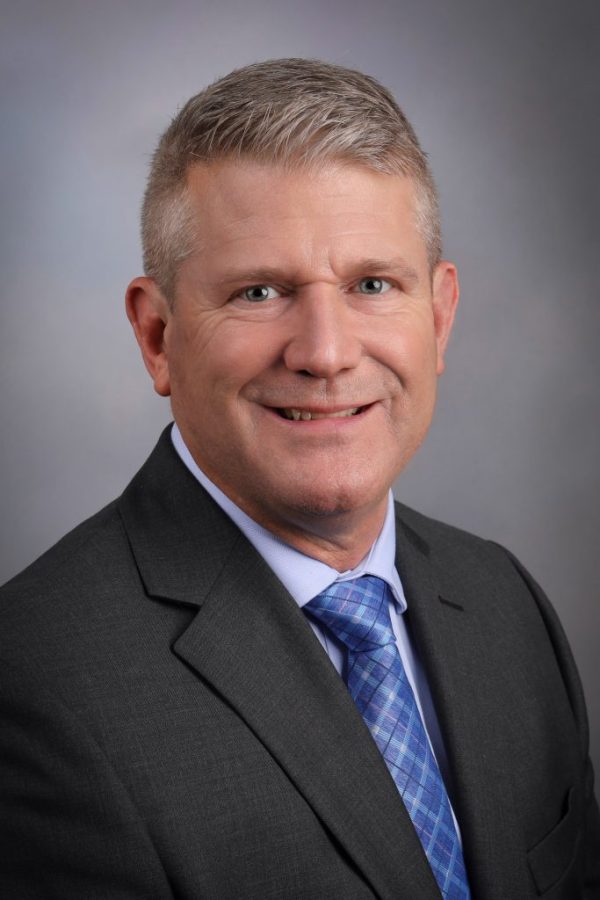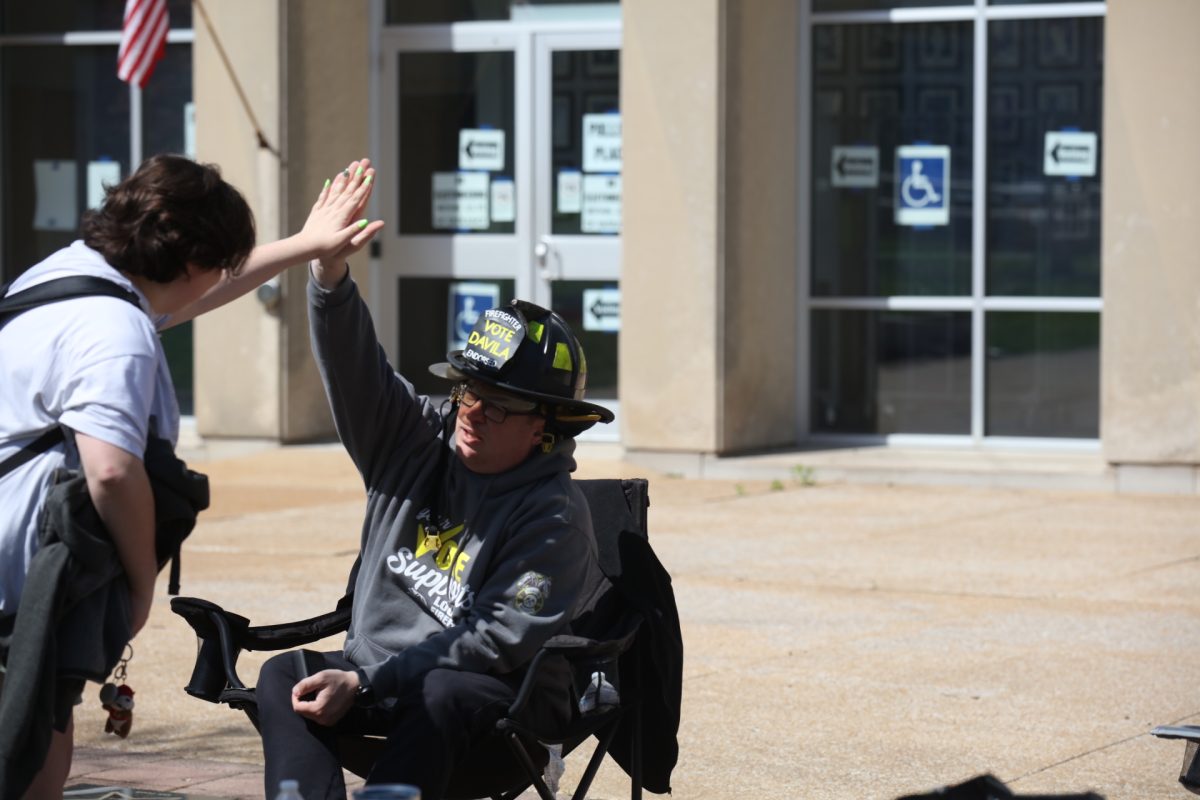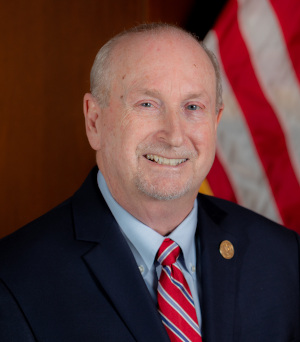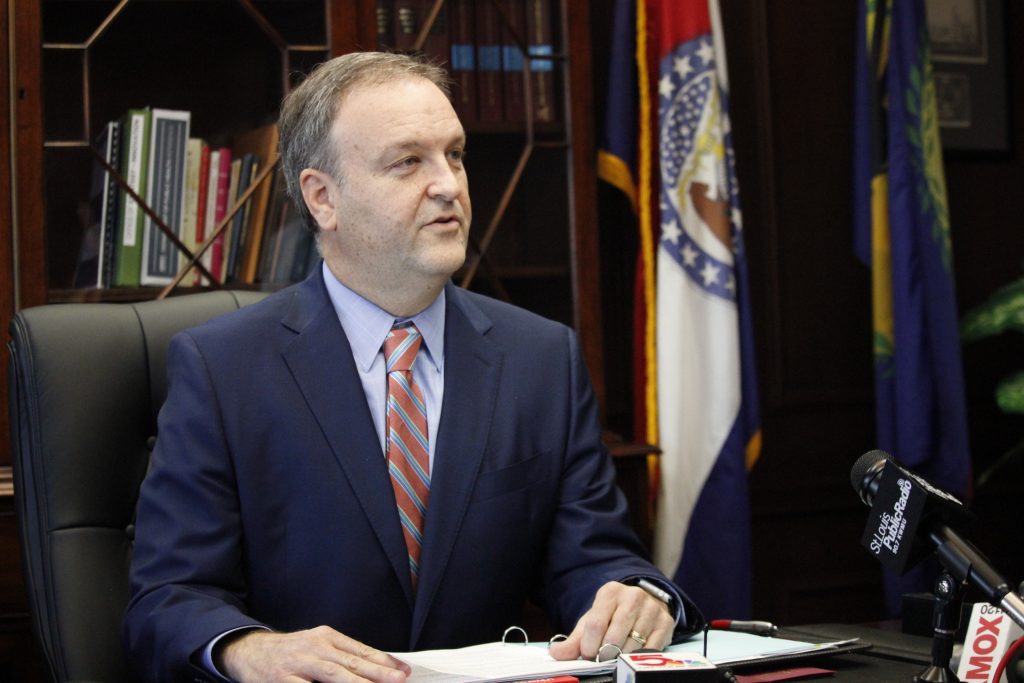As cases of COVID-19 rise in St. Louis County ahead of schools possibly reopening next month, County Executive Sam Page announced Monday that he would tighten business restrictions in seven ways for the next month in order to bring the trend of the virus down from where it’s currently headed.
The restrictions include limiting gatherings to 50 people or less, rolling back occupancy rules for businesses to June levels, including 25% occupancy, and enforcing a mandatory shutdown of all bars past 10 p.m.
The county executive, a physician who is up for re-election in the Aug. 4 Democratic primary in eight days, said he hopes the new restrictions will keep the county from reverting back to a stay-at-home order or other drastic restrictions. Although he said the hoped-for lower numbers from the restrictions taken this week will not bring the virus numbers down for three or four weeks, he hopes that will be enough to ensure children can have in-person school this fall and hospitals aren’t overwhelmed with cases.
“The last several months have been tough or everyone, we’ve lost relatives, some have lost their livelihoods, and we’ve all lost our normal way of life together,” Page said. “Together we can get back to normal, but we must stay united and work together to make the difficult but necessary decisions to limit the spread of COVID-19 in our community.”
To that end, Page announced seven restrictions starting at 5 p.m. Friday, some of which match restrictions that were in place until June:
•All bars will close at 10 p.m., with no late night service allowed
•Large gatherings will be restricted to 50 or fewer people, down from the current limit of 100. If gatherings are currently pre-approved by the health department, officials will contact those organizers to tell them what to do.
•Business capacity will go back to 25 percent, instead of the 50 percent that it has been at since June 29.
•All people who have taken COVID-19 tests are asked to voluntarily quarantine until they get their test results back. Those tests have taken an average of 5-7 days because so many people are taking tests, but asymptomatic people are spreading the virus in the wait between the test-taking and the result, Page said. This restriction is voluntary, not a requirement, and Page asked for businesses to work with employees to allow them to quarantine. And although this is not a requirement and the other restrictions won’t go into effect until Friday, Page asked anyone taking a test to quarantine starting immediately.
•The Department of Public Health will come up with new ways to get businesses to comply with regulations. Businesses that do not comply will be closed through a new graduated process.
•The county will be requesting more rapid notification from health-care providers in the county. Although a rapid-notification order is already in place, some providers have been better at complying than others, with Page singling out some urgent-care centers for not notifying the county as quickly as they should.
•The county will work with teachers to provide them places to safely quarantine once school starts because, like first responders, they are “front line workers” and should be treated that way, Page said. In the spring, the county rented hotels in North County for first responders to quarantine.
Page said the current trend is not as steep as what the county saw in late March and April when he instituted stay-at-home orders that stayed in place for nearly two months. But when the restrictions largely ended June 29, he and health officials set a mark that if the seven-day rolling average of hospital admissions reached more than 40, he would roll back the restrictions.
Hospitalizations reached that number over the weekend and will continue to climb over the next few weeks, Page said.
In the daily report on positive tests that came back Sunday, 523 people tested positive. The seven-day moving average of hospital admissions hit 40 Saturday and stayed at that number Sunday, in numbers released by the St. Louis Metropolitan Pandemic Task Force made up of the four major St. Louis hospital systems, Mercy, SSM Health, BJC and St. Luke’s. The seven-day moving average of all hospitalizations is 246.
“Because of these sacrifices we’ve all made, the cases aren’t rising as fast as they were back in April, but they’re rising too fast,” Page said. “Our rate is increasing perhaps not as much as other places, but it is increasing at an alarming rate,” with hospital admissions “rising much faster than we’d hoped at this point.”
He said cases are increasing the most in the 10-19 age group, and cases are higher than ever for those 20-29.
In a statement, the Pandemic Task Force said the hospitals fully support the new restrictions and were consulted by Page when developing them.
“All of the COVID metrics are moving at a concerning and unsustainable rate, including increasing cases, percent positives of testing, and hospital admissions. We must act now to avoid further spread, hospitalizations and deaths which typically follow rapid increases in cases”, said Dr. Alex Garza, commander for the task force. “We must take these steps if we want to flatten the curve, get our kids back playing sports and in school full-time, as well as keep everyone safe and healthy.”
“These aren’t easy decisions and not something we take lightly, particularly because we know it will impact people’s livelihoods. In order to prevent spread, it takes the efforts of the community. We all must do our part by always wearing a mask in public, regardless if required or not, stay socially distant, and not gather in large crowds. By taking these actions now we hope to avoid all the negative consequences of the pandemic, both to human health and the economy,” Garza said in the statement.
Asked if he was making the announcement to distract from news leading up to the election, Page said his announcement was based on data rather than election calculations.
“We have to work to protect people in St. Louis County regardless of whether or not we have an election, I think that data strongly supports the decision we’re making today,” he said. “There are people who want me to continue as county executive, there’s a whole group of people that don’t want me to continue as county executive, but I have to do what’s right. And in an election environment, especially the week before an election, I’m going to be accused of just about anything anyone can imagine, that’s what happens – but the data for these actions is extraordinarily strong.”



